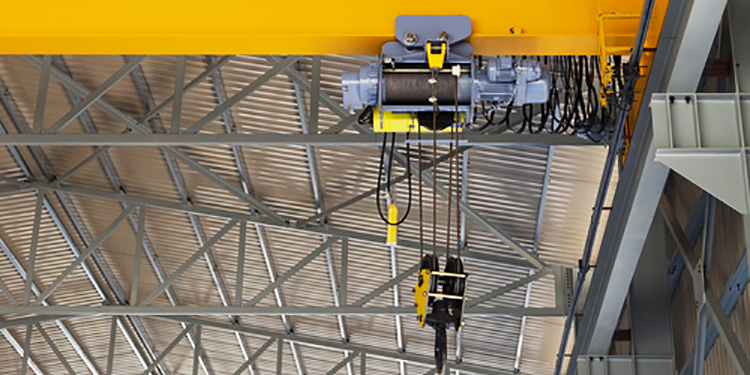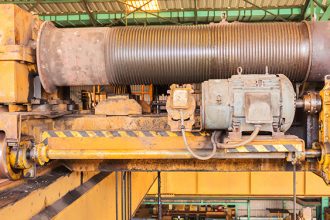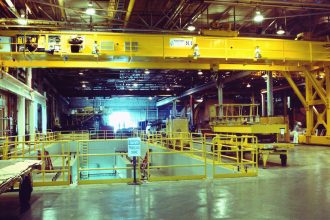Investing In Overhead Lifting? Consider All Building Clearances Before Buying

Perhaps it sounds obvious, but when planning a significant capital equipment investment in an overhead lifting solution — like a wide-span crane — it’s important to avoid making assumptions about an existing building’s structure. In this, the first of a series of “yes, that really happened” cautionary tales from the members of MHI’s Overhead Alliance, learn why it’s critical to verify a facility’s actual measurements before signing a contract for an expensive piece of equipment.
In this situation, a very wide-span facility was in need of a large overhead crane to lift, transport and position heavy, bulky machinery components through the building. The materials were too heavy to be moved by forklift, and with multiple obstacles on the existing floor, an overhead lifting solution made the most sense.
When specifying the crane, the facility manager only measured the two outside building columns, then assumed that the clearances were identical across the entire span of the building. In reality, however, a few columns in the middle of the facility were inset by three inches on either end. This resulted in a negative clearance situation that wasn’t discovered until the crane was installed and, upon commissioning, the braking system collided with the building columns in the middle of the facility.
The result? The expensive braking system was scrapped and had to be completely redesigned, increasing both the overall cost of the installation, as well as extending the timeline far beyond the customer’s original desired go-live date.
The lesson to be learned here is there’s no such thing as taking too many measurements. Additionally, leverage the expertise of your original equipment manufacturer or system integrator. Ask them to verify the dimensions, as well as provide a 3-dimensional drawing — or even a computerized simulation — of the proposed equipment showing all clearances and anticipated operation of the solution prior to signing off on the contract.
Have more questions about best practices in specifying equipment? Connect with the members of MHI’s Overhead Alliance (which includes the Crane Manufacturers Association of America (CMAA), the Hoist Manufacturers Institute (HMI), and the Monorail Manufacturers Association (MMA)) for purchasing guidelines and recommendations across a broad range of technologies and applications.



